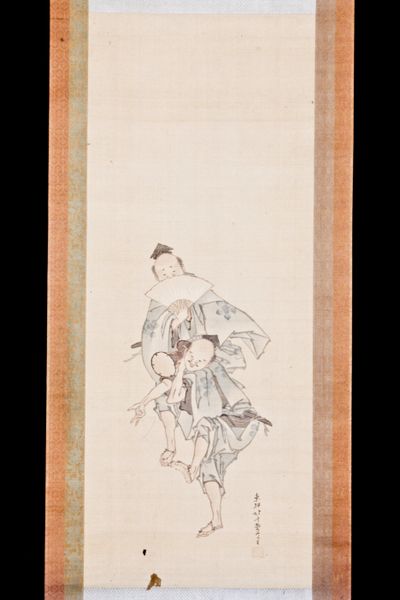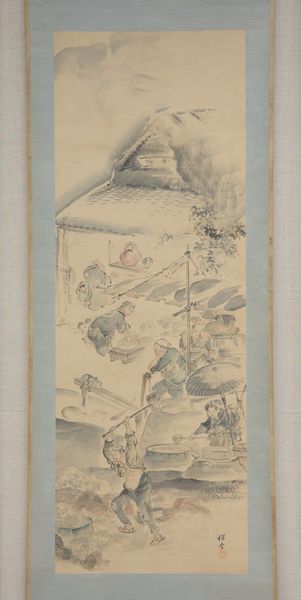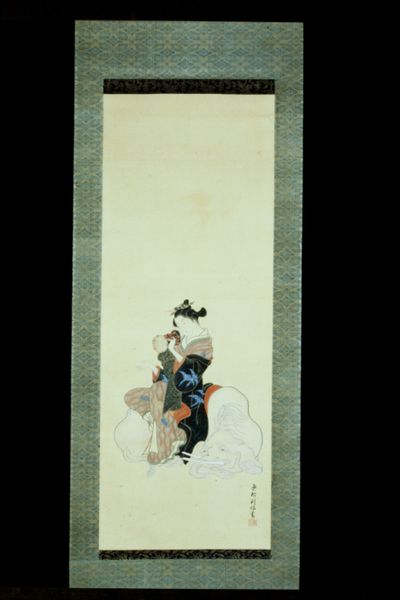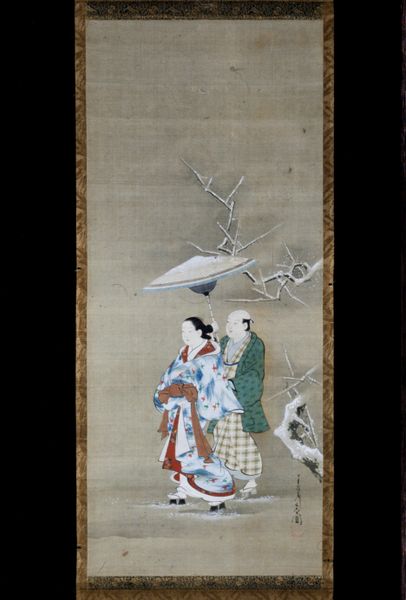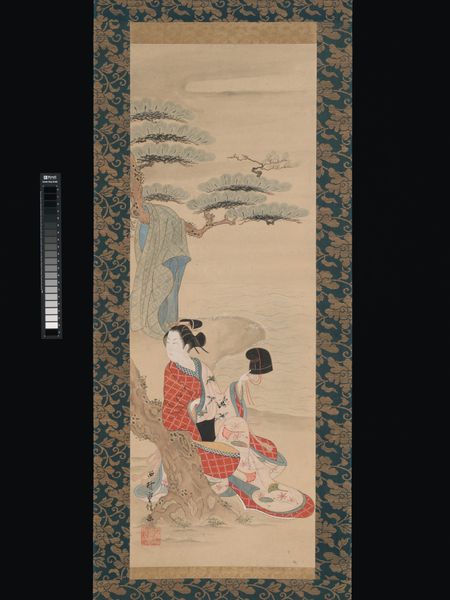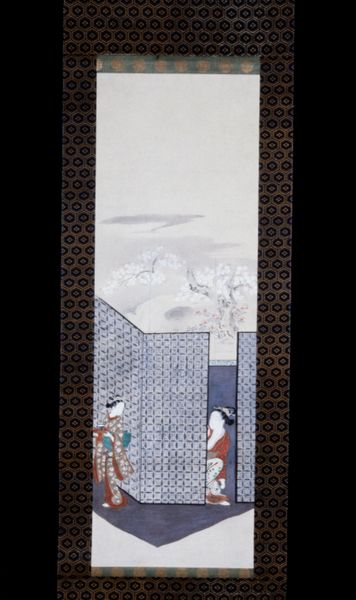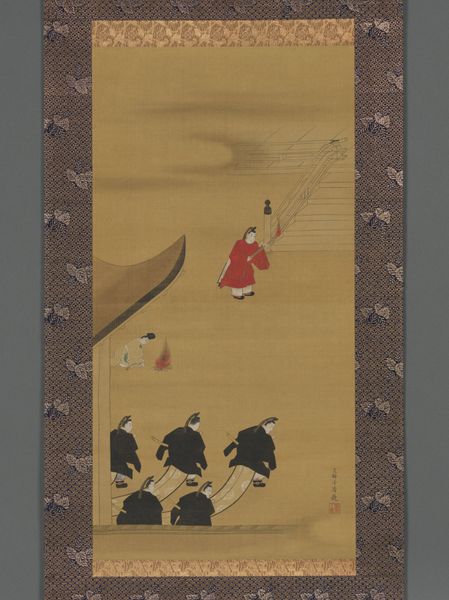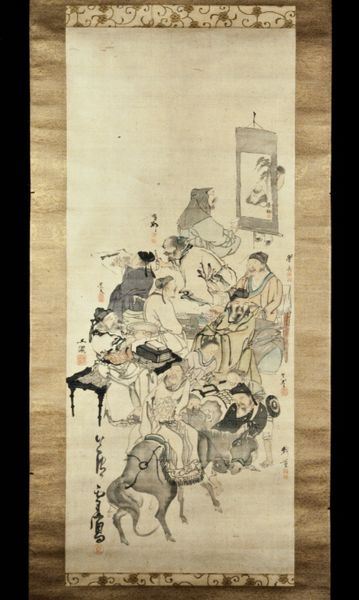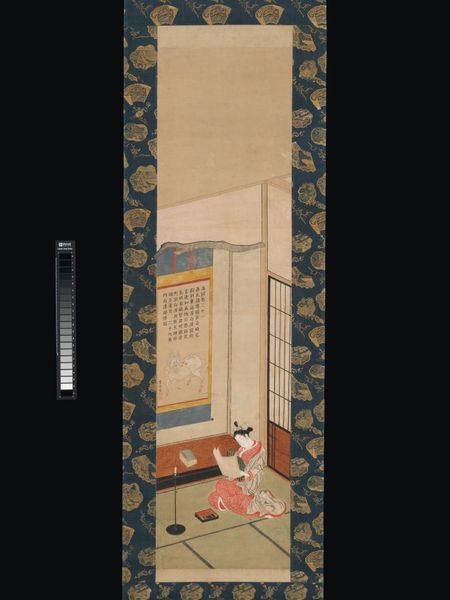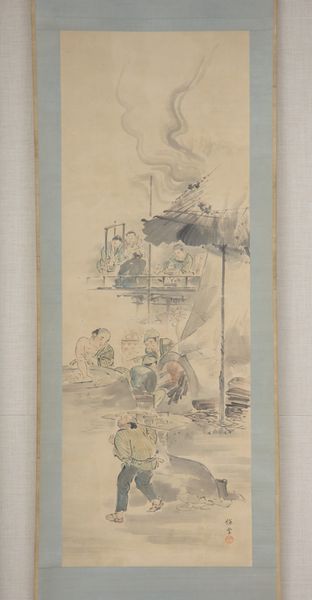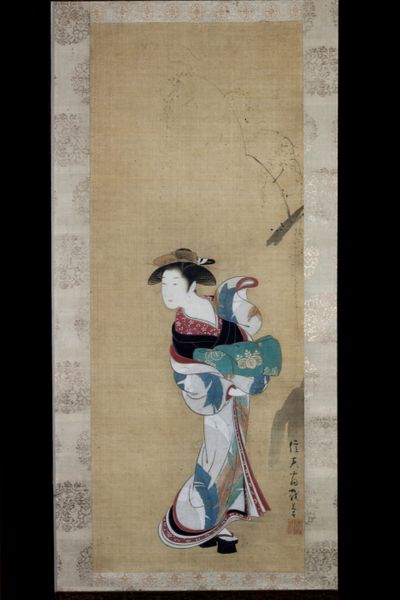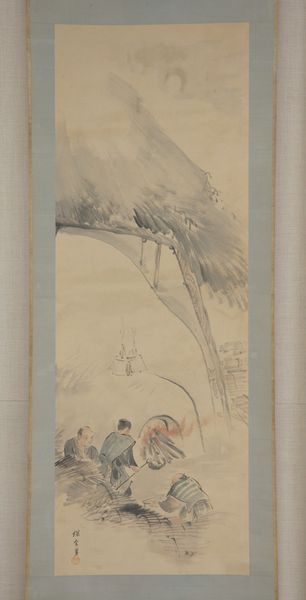
hanging-scroll, ink
#
snow
#
landscape
#
ukiyo-e
#
japan
#
historic architecture
#
traditional architecture
#
hanging-scroll
#
ink
#
genre-painting
#
watercolor
Dimensions: 40 3/16 x 13 3/8 in. (102 x 34 cm) (image)74 13/16 x 18 5/16 in. (190 x 46.5 cm) (sheet, mount) 52 cm W w/rollers
Copyright: Public Domain
Editor: So, this hanging scroll presents Hiroshige’s “Three Beauties in Snow,” from around the 19th century. It's done with ink, giving a delicate, almost faded feeling to the scene. The women appear dignified but a bit vulnerable against the vast snowy landscape. What do you see in this piece, especially thinking about its historical context? Curator: Well, it’s essential to recognize how Ukiyo-e, like this, were both products and shapers of their era's popular culture. The portrayal of 'beauties', or Bijin-ga, wasn't just about aesthetics. It was about idealizing fashionable women and showcasing contemporary life, a subtle social commentary woven into elegant prints and paintings like this hanging scroll. How does the setting influence our interpretation of the figures? Editor: I guess it highlights how even beauties are subject to their environment, the whims of nature and social expectations. It doesn't feel entirely celebratory. Is there more to unpack regarding the institutional role of pieces like this? Curator: Absolutely. Consider the commercial aspect: these images were readily available, contributing to the construction of identity and aspiration for the urban populace. Ukiyo-e prints and paintings helped disseminate new trends and aesthetics, subtly enforcing certain standards. What kind of audience do you imagine consuming this imagery? Editor: I imagine the audience was rather broad; those emulating upper-class aesthetics, but perhaps commoners too, aspiring towards them. It really blurs the lines of access to art. Curator: Precisely. The art isn't simply about individual expression but rather engages with the developing social and political forces influencing taste, class, and aspiration during Japan's Edo period. I find how such intimate art objects engaged with much larger social questions endlessly compelling. Editor: Me too. This helps understand the print not just as art, but a document, shaped by its context and in turn shaping that context. Curator: Indeed. Thank you for walking with me through this scroll.
Comments
No comments
Be the first to comment and join the conversation on the ultimate creative platform.
